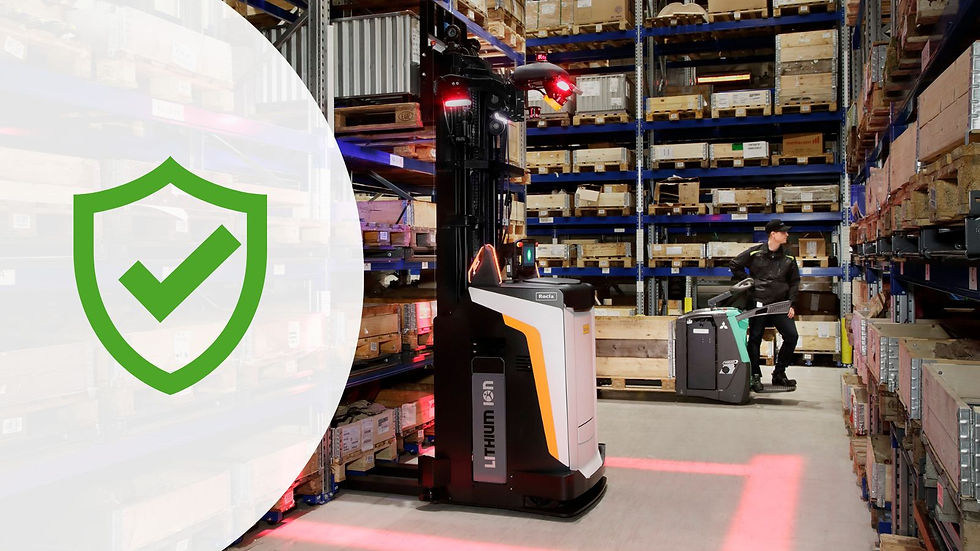Robotics in medicine and healthcare: transforming the future of patient care
- Paula González

- Aug 8, 2023
- 4 min read

In the ever-evolving landscape of medicine, a remarkable breakthrough has taken centre stage: robotic surgery. This groundbreaking advancement is redefining the realm of complex surgical procedures, with the da Vinci Surgical System leading the charge in this transformative field.
The da Vinci Surgical System, an ingenious creation by Intuitive Surgical, represents a quantum leap in surgical technology. Originally introduced in the early 2000s, it has undergone multiple iterations, fine-tuning its capabilities along the way. This innovative system is composed of a console where the surgeon presides, orchestrating robotic arms equipped with precision surgical tools. These robotic arms faithfully translate the surgeon's movements into meticulously measured actions within the patient's body.
Precision Redefined and Invasiveness Diminished
Robotic-assisted surgery brings a level of precision that traditional open surgeries and certain minimally invasive techniques can scarcely rival. The system's awe-inspiring 3D visualization bestows surgeons with an unparalleled view of the surgical site, enhancing clarity and depth perception. This newfound perspective empowers them to manipulate intricate tissues and execute delicate manoeuvres with remarkable accuracy.
Moreover, robotic systems are ingeniously designed to replicate the natural range of motion of the human hand, transcending the limitations of conventional laparoscopic tools. These highly dexterous robotic arms enable surgeons to navigate through confined spaces and carry out intricate procedures that would have posed significant challenges using traditional methods.
Swift Recovery Beckons
The concept of minimally invasive procedures, celebrated for their shorter recovery periods and reduced post-operative discomfort, takes on a new dimension with robotic-assisted surgery.
Patients undergoing robotic-assisted surgeries often experience briefer hospital stays, reduced blood loss, and a faster return to their daily routines. This translates into a profound positive impact on the overall well-being and quality of life of these individuals.
A Glimpse into Remarkable Robotic-Assisted Surgeries
Prostatectomy: Among the most prevalent robotic-assisted procedures is the removal of the prostate gland in patients grappling with prostate cancer.
Hysterectomy: Robotic-assisted hysterectomies involve the removal of the uterus, and they are lauded for their smaller incisions, diminished blood loss, and swifter recovery in contrast to traditional open hysterectomies.
Cardiac Surgery: Within the realm of heart surgery, robotic systems find their footing in procedures such as mitral valve repair, coronary artery bypass surgery, and atrial septal defect closure. These surgeries capitalize on the system's exceptional precision, tailored for navigating within the confines of the chest cavity.
Colorectal Surgery: Robotic-assisted surgeries for conditions such as colorectal cancer and inflammatory bowel disease introduce once again the advantages of minimized incisions, reduced scarring, and a hastened return to normal bowel function.
Unveiling the Synergy of Telemedicine and Robotic Remote Monitoring
As healthcare transcends boundaries and evolves into a more interconnected realm, the fusion of telemedicine and robotic technology emerges as a transformative force. This dynamic duo equips medical professionals to extend care remotely and diligently monitor patients' health status from a distance, transcending geographical limitations.
Some of the Perks of Telemedicine and Robotic Remote Monitoring:
Accessibility: Telemedicine shatters geographical barriers, extending access to specialized medical expertise for individuals residing in remote or underserved areas.
Convenience: Patients are bestowed with the privilege of receiving medical consultations and monitoring within the comfort of their own homes, sparing them the need for frequent journeys to medical facilities.
Reduced Healthcare Costs: By mitigating travel expenditures and curbing hospital readmissions through the early identification of complications, telemedicine can yield cost savings for patients.
Enhanced Patient Compliance: The ongoing remote monitoring approach bolsters patients' adherence to treatment plans and necessitates lifestyle adjustments.
Resource Allocation Optimization: The synergy between telemedicine and robotic remote monitoring facilitates the judicious allocation of healthcare resources, honing in on patients needing immediate attention.
Robotic Resilience in Emergency Medical Care
One of the most promising applications of robotics in emergency medical care lies in its rapid and accurate patient assessment and diagnosis capabilities. Thanks to the prowess of Artificial Intelligence, robots can swiftly assess vital signs, symptoms, and medical histories, providing medical professionals with a rapid and precise overview of a patient's condition. This timely information empowers medical teams to make well-informed decisions and deliver appropriate treatments, potentially saving precious time in critical situations.
Moreover, these robotic systems can extend their assistance to tasks such as delivering essential medical supplies to remote or perilous locations and safeguarding the well-being of both patients and medical personnel.
These systems adeptly manage tasks ranging from patient triage and appointment scheduling to prescription dispensing and even preliminary diagnosis. Armed with an arsenal of medical data and sophisticated algorithms, these automated solutions provide precise and timely support to healthcare professionals, enabling them to focus on the intricate and critical aspects of patient care.
While the efficiency gains and reduction in human errors brought about by these technologies are remarkable, they also beckon a contemplation of the ethical implications. Striking the right balance between the advantages of automation and the indispensability of human empathy and judgment in the medical domain becomes paramount. As the journey of automated medical assistance unfolds, its potential to streamline healthcare workflows and enhance patient outcomes gleams with promise.
What are your opinions on the prospect of robots assuming the responsibilities of doctors? Drop your thoughts in the comment section below!




Comments